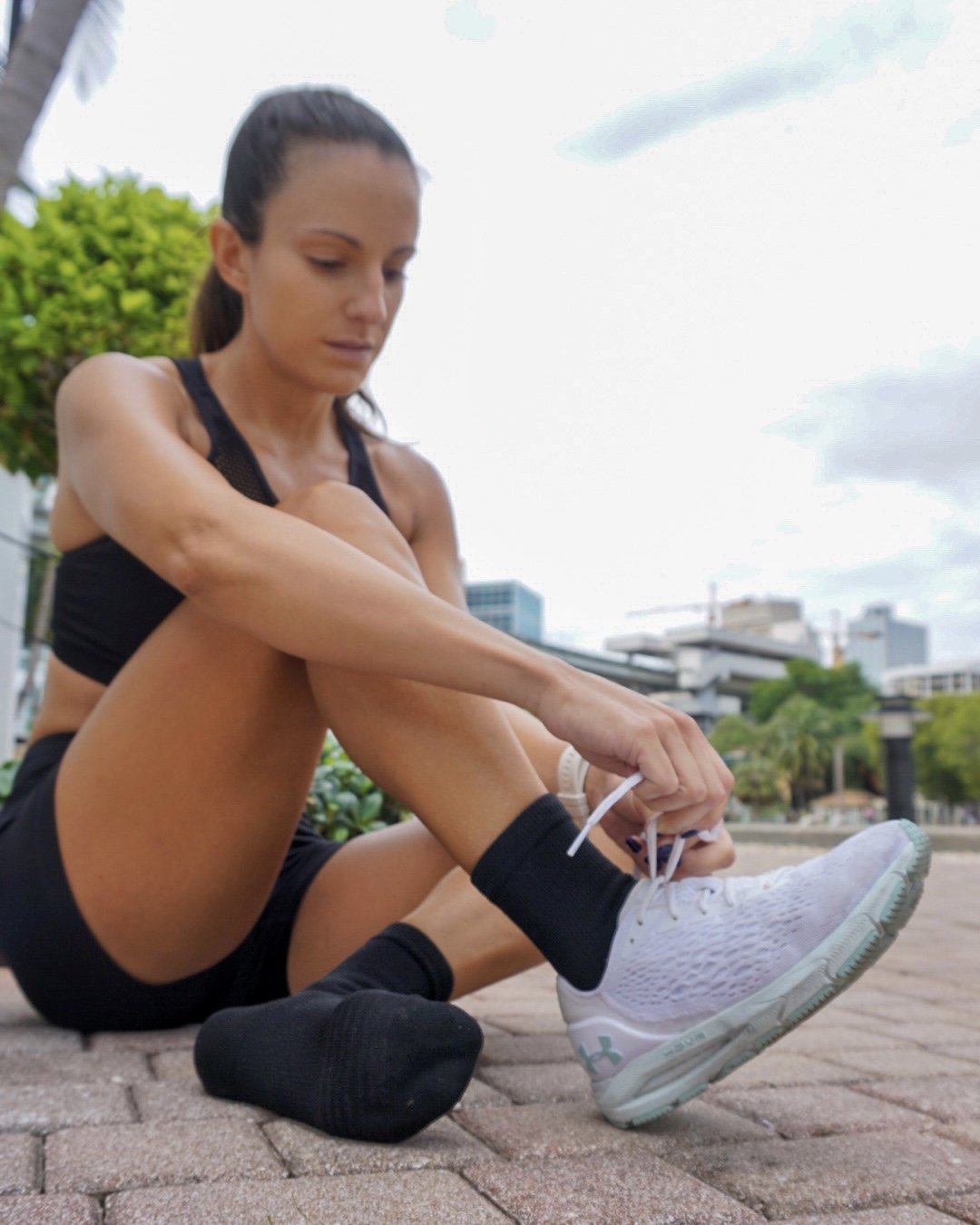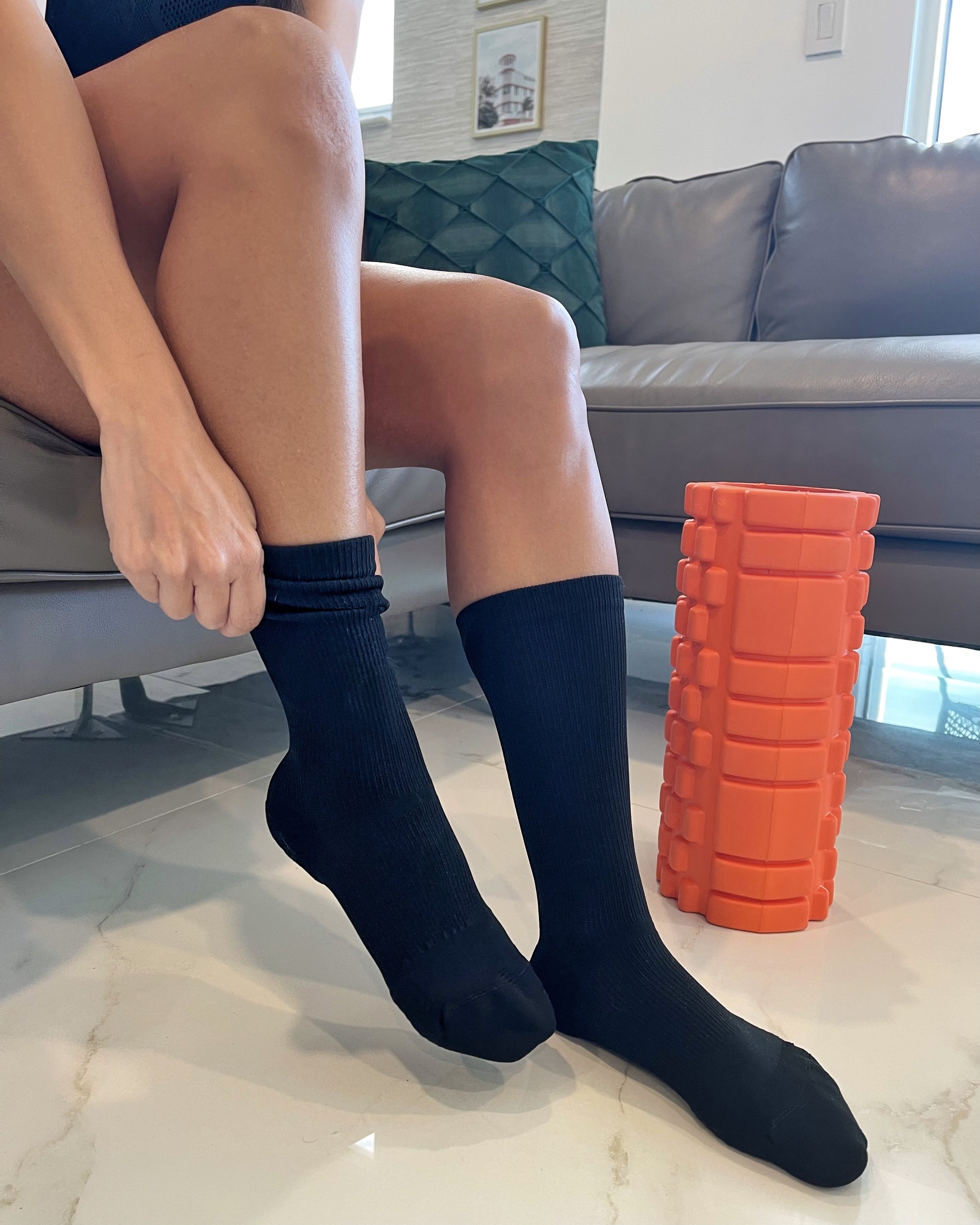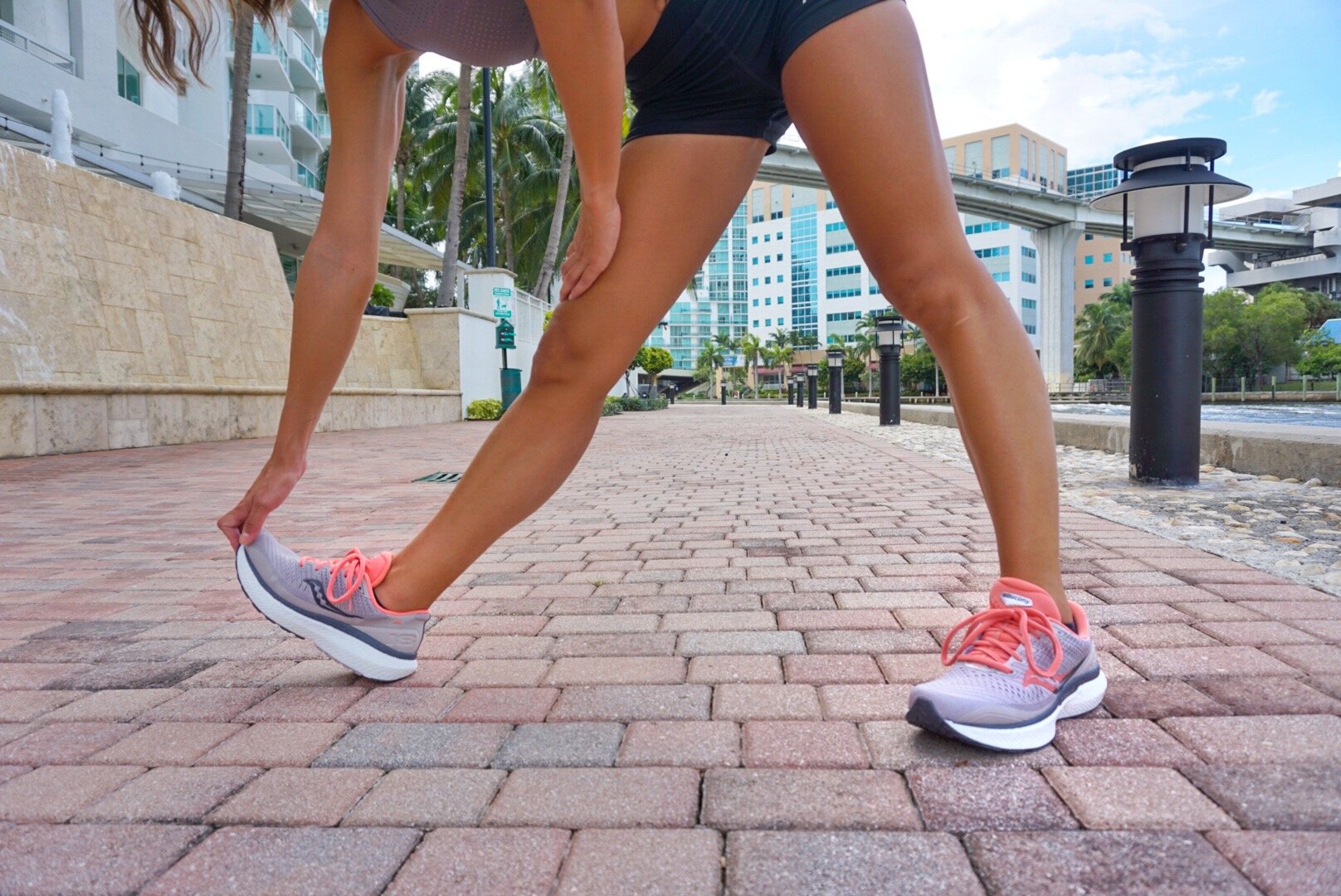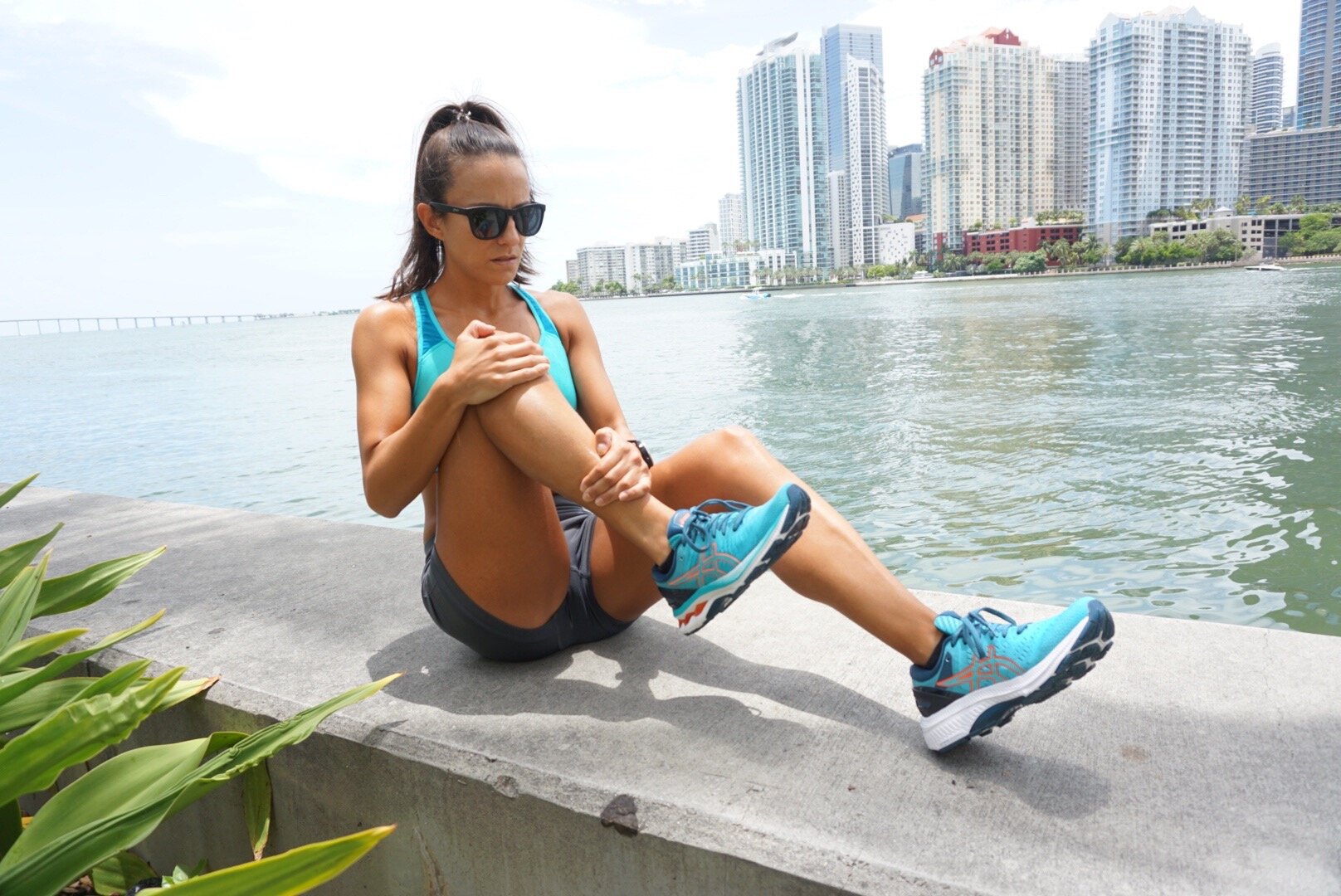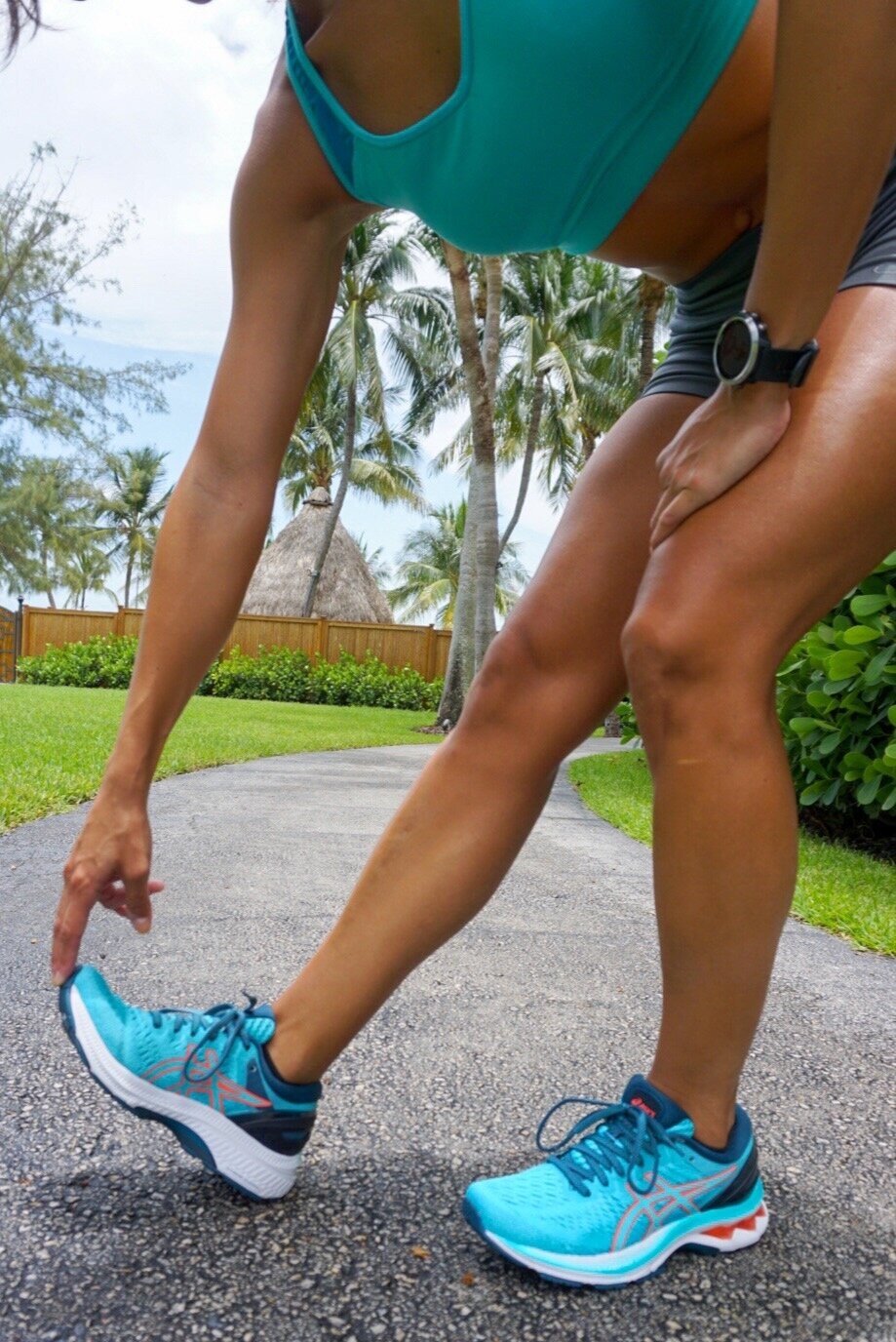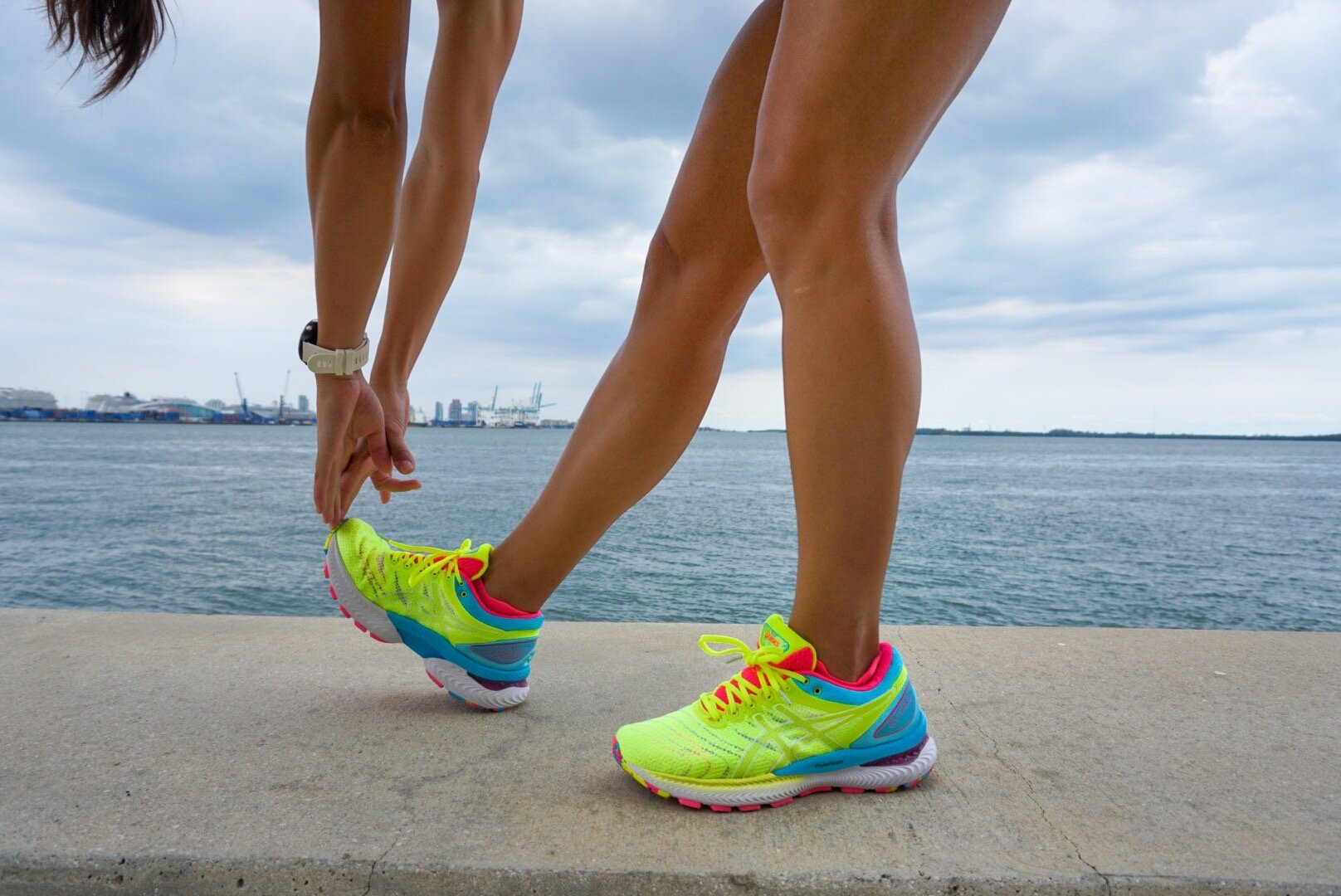Running form is a hot topic in the running world these days. As common as it is to hear and read about, it’s not so common that runners actually fix their faulty form. Whether you are experiencing pain, recovering from an injury, or interested in improving your running form to avoid any mechanical issues, correcting an existing hip drop is essential. Most injuries and overuse pains from running are caused by muscle imbalances and weakness, that unfortunately, are not addressed until you’re actually injured. Read on to learn the steps to take to identify and fix your hip drop.
Read moreRunning 101 for Beginners and Race-Seekers
Looking to start running? Maybe you’re interested in getting into a more structured plan to set yourself up with new PRs? Either way, this article has you covered! Read on to learn about my top tips to start your running journey, which are also useful for those of you getting back into the sport after a break.
Read moreRun Fast and Recover Faster with Apolla Performance Socks
From racing shoes to headlamps and everything in between, runners can be quite picky about their gear. As time goes on and technology advances, runners want the best of the best to be able to perform well, stay away from injury, and recover as fast as possible. Believe it or not, socks play a significant role in foot health for athletes. They are not just made to add a layer of cushion in between the skin and shoe seams. They can provide the feet, and pretty much every joint up the body, with support and injury prevention no matter what your lifestyle dictates.
Comfort is Always Number One
The first thing we aim for when picking out any piece of an outfit, shoes, or socks, is comfort. Runners, in particular, don’t care as much about looks, as long as they can feel comfortable on their long runs and avoid issues like achy joints, blisters, and heaviness. This all can be solved with a good pair of socks. In comes Apolla Performance. Initially created for dancers, who we can all agree get the most beating to their feet, these styles are equally perfect for any lifestyle. Just recently a research study concluded their effectiveness in reducing force and received the American Podiatric Medical Association Seal of Acceptance.
Apolla Performance socks are all made in the USA with REPREVE, which is certified sustainable yarn. Runners are sure to be happy with the Amp (no-show), the Performance (crew), and the Infinite (mid-calf), since they all provide the perfect thickness to protect from impact, blisters, and moisture, without feeling suffocated in running shoes. Each has energy absorption padding in the heel and ball of the foot which helps cushion during both push-off and landing—the parts of the running cycle that damage the feet the most. If you suffer from plantar fasciitis, you will be grateful for this feature!
Instability is the Enemy
As a physical therapist, I am an advocate for creating the most stable surface during the running cycle. This means being extra picky about the shoes and socks you wear. Weak, overused, or tired ankle and foot muscles can lead to ankle rolls and strains in the tiny muscles of the foot from the constant work when your foot and ankle are not supported well. Apolla Performance socks are made with targeted high compression where you need it the most—around the ankle joint and the arch of the foot. The arch actually has three zones of compression to lift and stabilize, which makes a significant difference if you suffer from plantar fascia issues. In these cases you want to prevent your arch from getting too stretched out, which will end up tugging on your heel bone. It’s a tough condition to treat, so you want to do anything you can to avoid too much pressure to this area!
Work Hard, Recover Harder
The mid-calf Infinite Sock from Apolla Performance is the best choice for both recovery runs and your rest days. Providing your feet and lower legs with compressive support is ideal to help with circulation—the key to recovering faster. This is best done with graduated compression up the calf, which is exactly what this pair provides. Using compression socks during and after runs, especially speed workouts and long runs, is ideal for those suffering from achy calves, shin splints, Achilles tendinitis, and any other foot and ankle conditions. You want good blood flow and comfortable cushioning if you want to be fully ready for your next workout. If you are looking for happy and healthy feet, Apolla Performance has you covered!
A Marathon Training Staple: The Saucony Triumph 18
Sponsored by Zappos. All opinions are my own.
We are quickly approaching the last quarter of the year. I’m sure I am not the only one who had these big goals for 2020 and felt somewhat derailed months ago when everything pretty much came to a halt in our lives. At least that’s what it seemed like. What really happened was life had to keep going, but with a bunch of alterations and limitations. For runners, the biggest change was the loss of racing this year. This, on top of being limited to solo running for a long time, has been the biggest block to staying motivated. I won’t lie—I got a bit jealous seeing some runners continue on their race training programs and smash their PRs with virtual races.
Since I’ve never been into racing virtually, I used the summer to build a good base and keep things easy. I am happy I chose this route during these crazy times, because it helped me truly embrace my love for running and how having a more relaxed schedule can still keep me in shape, while staying sane at the same time! Well, now I’m on to the next chapter! The next race I’m signed up for is my hometown race, the Miami Marathon, at the end of January. My new kicks, the Saucony Triumph 18 from Zappos, came just in time to break them in during my first week of training. If you didn’t know, I get all of my running gear from Zappos. They have the largest selection of products and the best customer service. Plus—they offer free expedited shipping and free returns for a year when you are part of the free rewards program. I highly recommend signing up if you love to shop!
Faster Than Ever Before
I’ve ran with the previous Saucony Triumph versions, including the 17s, which were just on the last tip of their lifespan, and I’m happy to say the Triumph 18 are a perfect update to what was already one of my favorite running shoes. I have been using the Triumph for a few years now for the majority of my easy and recovery runs. They have always been my most cushioned shoe, making my feet actually feel recovered after runs. Although most of my long runs have been done at an easier pace, I usually avoided using the Triumph since they felt a bit heavier than most of my other pairs. I was so happy when I felt the much lighter and flexible fit of the Triumph 18! The faster feel is definitely the most evident update.
Thanks to the PWRRUN+ technology, the cushioning of the Triumph 18, is coupled with a lightweight outsole, which makes the shoe a good option for longer and faster runs. After running two easy 7-milers, I wanted to feel this for myself and used the Triumph 18 on my weekend 90-minute run. I threw in several sets of 1-minute pick-ups to test out the speed in the shoes, and I was pleasantly surprised at the springier, faster feel of this update.
Anti-Fatigue at its Finest
The main reason I loved my previous Saucony Triumph pairs is how much they helped with the recovery process after harder workouts. During marathon training, I schedule these easy recovery runs every other day and sometimes in the evening after running hard that morning, and the Triumph have always helped keep my feet and joints pain free. You’ve probably heard and seen me mention before how important the right running shoes are to help prevent injuries and keep you running long. Well, the Triumph 18 are the perfect pair to rely on for your race training. I am prone to plantar fasciitis and have problematic feet to begin with, so I used to train with extremely sore feet and this was a huge limitation to my progress. Yes, my feet still get sore after hard workouts, since I still sometimes wear the wrong shoes for me, but right after just one run in my Triumphs I’m already ready for my next workout. Keeping these shoes as part of my shoe rotation all this time has truly been one big reason why I have been able to avoid plantar fasciitis for a few years now and push harder during workouts.
I’m excited to bring my Saucony Triumph 18 along with me for my marathon training this fall. I’m only on the first week of this structured training block, but I know it will be a good one! After months and months of dealing with this global crisis and feeling unsure about what the near future holds, I am ready to tackle my next big goals! Even if the race does not happen in January, I still want to give it my all for the rest of this year and try my first real virtual race, and shoot for a sub-3 marathon finish. The Triumph 18 is sure to help get me there. Now, go get yourself a pair from Zappos!
Shoe Review: Asics GEL-Kayano 27
Sponsored by Zappos Running. All opinions are my own.
No races? No problem! You don’t need a race to keep on running. It’s true we find a good amount of motivation when we sign up for a big race, so it’s normal if we are feeling a bit bummed during this time as mostly all races have been canceled for the year. The thing about running that we often forget is that you can do it year round and get good at it, too—whether or not you have a race on the horizon. I, myself, think of other ways to get motivated. I create a list of short term goals for running that get me just as excited as my race goals do, and remind myself that reaching these smaller goals will only lead to better progress when I can finally race again.
Another way I motivate myself is with cool, new running gear. My favorite part of my wardrobe is running shoes, of course! I recently got another brand new pair from Zappos—the Asics GEL-Kayano 27. I shop from Zappos all the time, since they have an amazingly large selection of everything. I am a VIP member which also means I get free, super fast shipping, plus free returns for a year! I always have the best shopping experience and find everything I am looking for.
Next Level Performance
With the many months we have until our next races, it’s a great time to break up the time into different training blocks. One of the best ways to improve in distance running is to focus on the whole package, which takes time! So having lots of it is a good thing! Running in the Asics GEL-Kayano 27 is a perfect option if you are looking for a high-level stability shoe. My first impression of the shoe was how lightweight it is, especially after reading about the different systems that make up the shoe, which I thought would make the shoe feel heavy.
As I usually do with every new pair, I tried out the Kayano 27 for the first time on a short easy run. The first thing I noticed was how conforming the shoe felt during every part of the gait cycle. This is my favorite feature of Asics—the GEL that runs across many of their styles. It’s what lets the shoe move with the foot. Shoes without this feature tend to feel stiff when you push off the ground with the toes. The Kayano 27 does a good job with this transition and provides a springy step.
Built-In Comfort
Since I have a history of ankle and foot injuries and have dealt with plantar fasciitis for almost my whole running life, I try my best to find shoes that have a decent amount of cushioning but still provide the responsiveness I need for speed work. I have a pet peeve with running shoes—shifting of my heel, which is non-existent in the Asics GEL-Kayano 27! The external heel counter of the shoe truly holds the heel in place and makes it feel “locked”, so you can count on these shoes to feel more fitted than most other styles.
The DUOMAX support system is a game changer for those of you who overpronate naturally while you run. It’s what gives the shoe the stability aspect and controls that inward rolling of the foot. Not controlling overpronation during running can lead to a long list of injuries such as direct ankle and foot problems, runner’s knee, IT band syndrome, and low back pain. It’s important for runners to pay attention to this when choosing the right shoe. This pair also has a specially designed trusstic system in the women’s shoe compared to the men’s, with softer foam.
I’m excited to keep using my GEL-Kayano 27 for the bulk of my training since so far I find that they truly protect my feet from the constant impact of my daily running. I highly recommend this pair for medium to long runs at a consistent pace, although they are pretty good at quick pace changes, as well! I’ll keep you all updated as I continue to break them in and use them for different distances and run types. In the meantime, check out all of the colors on the Zappos site and don’t forget about the VIP membership benefits!
A Colorful Shoe Review: Asics Gel Nimbus 22
Sponsored by Zappos. All opinions are my own.
If there is a way to get a runner hyped for their training program, it’s with a fun, new pair of shoes. My motto for gear is: the brighter, the better! Along with an energetic color, of course my running shoes need to have the right qualities to lead me to fast and comfortable miles. I tend to choose my running shoes based on the type of run I’m going for—easy, tempo, sprints, or long runs. If you’re like me and have issues such as plantar fasciitis, a history of foot or ankle injuries, or simply weak ankles, then support is the number one quality to seek.
I got a new pair of Asics from Zappos and I’m obsessed, especially since they are the brightest any running shoe can be! If you’re not into the neon colors, Zappos has so many others available. I get pretty much all of my running apparel and shoes from Zappos and they satisfy my every need without fail! You can always count on their knowledgeable customer service to help guide you to the best picks and take care of any issues. They also offer free expedited shipping if you are a VIP rewards member (which is FREE to sign up!) and free returns for one year. It’s the best place to shop for all running essentials!
Every Day Runner
If you are looking for all around cushioning, Asics Gel Nimbus 22 is a good choice. It’s packed with their signature Gel Technology both in the forefoot and rearfoot to provide comfort to the entire foot, while absorbing shock during impact. I’ve been running in the Nimbus 22 for about 6 weeks now, and they’ve only gotten better with every run. I’ve tried them out for every type of workout, but seem to love them the most for my medium to long easy runs. These are the sessions that I use as both recovery and aerobic work so I can tell you the Nimbus 22 are perfect for keeping my feet from getting sore or overworked.
At first this pair took a couple of runs to really break in. They felt slightly stiff, but by day three they were extremely flexible, yet still supportive throughout the gait cycle. Push-off feels springy, but not so much that excessive pressure rolls onto the balls of the feet and toes. One update from the previous model that adds to the responsiveness is an extra 2 millimeters of plush FLYTEFOAM Propel technology. It keeps it springy with a softer landing. The “stiffness” I felt is actually a benefit because it aids in supporting the foot when making turns especially at a fast pace. My ankles are on the weak side, so any time a shoe keeps my ankle from rolling is a bonus!
Durability is Key
The unfortunate issue year round distance runners have to deal with is the quick wear and tear of our favorite pairs. You would think speed workouts wear away shoes quicker, but for me it’s the every day pairs—the ones I wear for my easy medium to long runs, since they make up the bulk of my weekly mileage. Most brands create running shoes with the lightest materials possible, since it truly does make a difference for speed, but unfortunately make the shoes less durable. Asics uses a technology called Trusstic System, which enhances the structural integrity of the shoe, but still keeps it lightweight. Usually a significantly supportive shoe will be the opposite—heavy and bulky. There are other materials built into the Nimbus 22 that also improve the lifespan, such as AHAR (Asics High Abrasion Rubber), which is embedded within the outsole of the shoe and does not add weight at all. If you come across a running shoe that lasts longer than the typical 200 to 300 miles, you have found a winner! I have not yet reached this mileage yet with my Nimbus 22, but can already tell how much they can withstand after over 120 miles in them so far.
As I mentioned in the beginning, running is much more exciting when you are wearing a good shoe and even more so when the shoe is bright and colorful. In my opinion, something about neon hues brings energy to my runs! These beauties are part of Asics’ Run in Color collection and are currently my favorite out of the many pairs I own! Again, if you are not a fan of the bright colors and are looking for a more minimal-toned, neutral, or less shocking shoe, Zappos has it all!
Beta-alanine & Exercise Performance
Runners, like many other athletes, are constantly looking for safe ways to improve their running performance. Whether it be training in certain environmental conditions like in the heat or at altitude, or changing their fueling methods, there are many strategies one can use to get faster and last longer. The key to seriously improve performance is to understand where you are lacking in the first place. Is it too little muscular strength that is holding you back from running with good form? Or maybe you are actually pretty strong but endurance is what is weak. In many cases performance is hindered by poor nutrition, especially before and during exercise. For some runs it may be just fine to go out on an empty stomach but if you want to run hard and for a long period of time fueling the body efficiently is important.
Supplementation
It is common for athletes to supplement their diets with nutrients they may be missing out on in their regular meals. Runners supplement with electrolytes and other vitamins that are important for proper organ function and recovery from training. Protein powders are probably the most common supplement athletes consume, as it is essential for muscle repair and growth. The building blocks of protein, amino acids, are important in the diets of athletes since during hard exercise muscle fibers go through microscopic tears and require these essential amino acids for the repairing process.
Beta-Alanine
One amino acid that is actually considered a non-essential amino acid, called beta-alanine, is a commonly used supplement in the sports world. The reason it is considered a non-essential amino acid is because it is not involved in protein synthesis, as are the others. Beta-alanine produces carnosine, a substance that is stored in the muscles and reduces lactic acid accumulation. This lactic acid buildup is produced in the muscles during exercise and is the reason why our bodies require recovery time in order to be ready for another session. If less lactic acid is building up in the first place than recovery time will be shortened. This is the main reason why beta-alanine is being used to improve performance.
*exercise image
During lactic acid accumulation, excess hydrogen ions are produced in the muscles, causing a drop in pH levels—meaning they are now in a more acidic state. This acidity blocks glucose breakdown, which is normally what fuels our muscles, causing less muscle contraction, and eventually fatigue. The carnosine produced by beta-alanine is what maintains a normal pH level in the muscles during this process, therefore lowering the risk of fatigue. This benefit of increased time to exhaustion helps runners and other endurance athletes last longer.
How Does Beta-alanine Help Marathoners?
Studies have shown that these benefits are more evident in short bouts of high intensity exercise lasting between one and several minutes. This means speed session consisting of 400m to mile repeats can be greatly improved with the use of beta-alanine supplementation. Although marathon running is commonly looked at as a low to moderate intensity exercise, the fact that you have to run at a fast goal pace for several hours requires specific training at significantly high intensity. This is where those short bouts of intervals come into play for marathon runners. Strengthening those fast twitch muscle fibers through speed sessions that can benefit from beta-alanine supplementation will lead to maintaining that goal pace you desire on race day.
Diet, Supplementation & Dosage
Most people who regularly eat animal protein get a sufficient amount of beta-alanine. Beef, pork, chicken, and fish are the main food sources of this amino acid. Regular servings of these proteins will contain between 50 to 250mg of beta-alanine. Most research advises to have between 2 and 5 grams per day to reap the benefits of carnosine production. Over the course of 4 weeks, carnosine concentration can increase by up to 40-60%. Combining the supplementation with a meal has been shown to enhance the production further. After one month of supplementing with this amount, the dosage is then lowered to half. Beta-alanine does not have to be taken at a certain time in order to gain the benefit. Some athletes combine it with their pre or post-workout drinks, but it can be included with any meal.
Supplementing with beta-alanine has been shown to be safe and effective at improving endurance and decreasing muscle fatigue during exercise. One common side effect that may be experienced is paraesthesia, which is a tingling sensation usually noticed in the face, hands, and neck. This effect is usually mild, short-lived and occurs during the first few times of taking the supplement. Carnosine production decreases by 15-20% from youth to adulthood, which suggests that beta-alanine supplementation may be even more beneficial for older athletes. As with any other supplement, it is advised to talk with your medical doctor before including anything new in your diet. Although beta-alanine is safe and shown to be effective, studies have not concluded its effects on athletes with any specific medical condition.
Sources
Ducker KJ, Dawson B, Wallman KE, Effect of Beta-Alanine Supplementation On 800-M Running Performance, Journal, Sept 26 2019.


